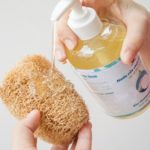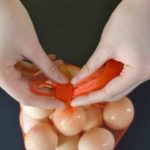During the hot summer weather, if not properly cleaned, a large amount of bacteria can thrive. When washing dishes can lead to cross-contamination, affecting people’s health. The longer it is used, the more bacteria can enter the body. According to research, after a week of use, a dishcloth can contain up to 2.2 billion bacteria.
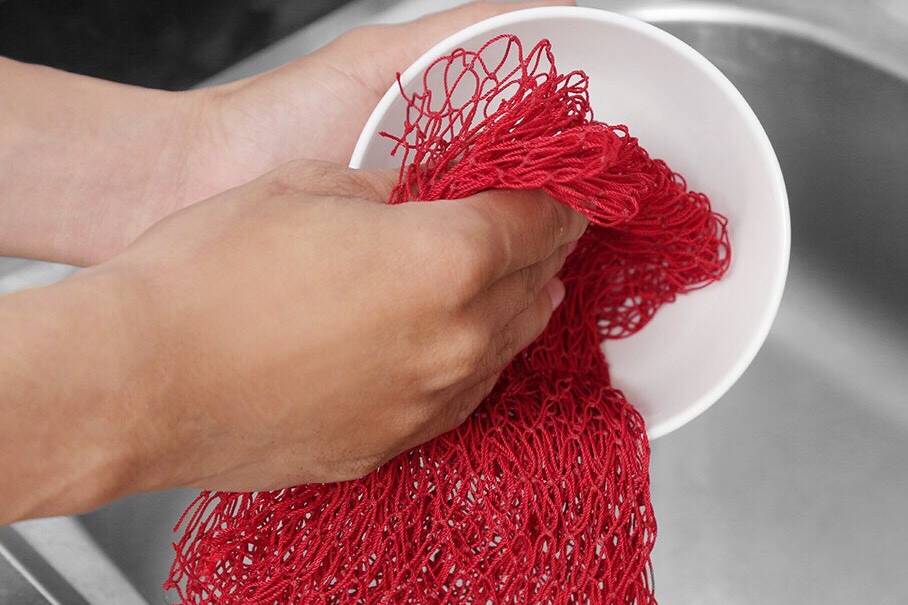
Bacteria thrive in moist environments, so don’t leave the dishcloth next to the sink or on the stove. Wash and dry it thoroughly in the sunlight. When using and managing the dishcloth, you can generally follow the following principles:
Regularly replace
After scrubbing pots and pans daily, wash the dishcloth thoroughly with detergent and water, then hang it in a well-ventilated area to dry naturally. The longer the dishcloth is used, the more bacteria it contains. If possible, it is best to disinfect it once a day and replace it once a week.
Clean with eggshell
Washing with eggshell not only disinfects and kills bacteria but also saves costs for families who frequently change dishcloths.
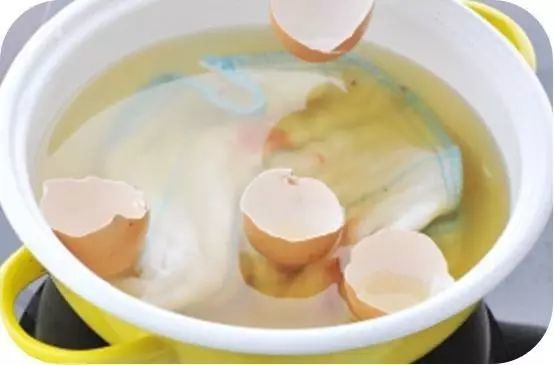
Method: Put the dishcloth in a pot of water, then add the eggshells. Boil on high heat for 5 minutes. Boiling one pot of dishcloths only requires about 5 eggshells. Due to the layer of egg whites on the inner wall of the eggshell and the protease contained in it, it has the ability to clean vigorously. After boiling, scoop out the dishcloth, rinse with cold water, and dry in a well-ventilated, sunny place.
Sterilization methods
– Sterilize with a microwave: Soak the dishcloth in a bowl of water and microwave for 3 minutes.
– Sterilize by boiling: Put the dishcloth in boiling water and cook for 3-4 minutes.
– Sterilize with disinfectant: Add 1 ml of disinfectant to 250 ml of water and soak the dishcloth in the prepared water for over two hours.
To keep the dishes clean and fresh, you should not only pay attention to the dishcloth but also to the proper way of washing dishes. Here are the correct ways to wash dishes:
1. Classify dishes with oil and without oil
If dishes are not classified, they will transfer oil and grease to each other, doubling the workload of scrubbing. Therefore, divide the dishes into different categories, separating those with oil from those without oil. Wash the dishes without oil first before washing those with oil. In addition, dishes that contain raw meat should be kept separate from dishes that contain cooked food, fruits, and vegetables. Wash the dishes with cooked food first, then wash the dishes with raw meat after.

Tip: When washing dishes, pay attention to the bottom of the dishes. If you don’t pay attention to the bottom, when stacking dishes, the bottom of one dish will press down on the other dish, transferring bacteria from one dish to another.
2. Wash dishes as soon as possible, avoid soaking for too long
Many families have the habit of soaking dishes in the sink after meals and washing them together after everyone finishes eating. As you know, what you soak is not a dishpan, but a pan of bacteria! Moreover, the longer the dish is soaked, the harder it is to wash, especially during the summer. If left until the next meal, the food residue will ferment and emit an unpleasant odor.
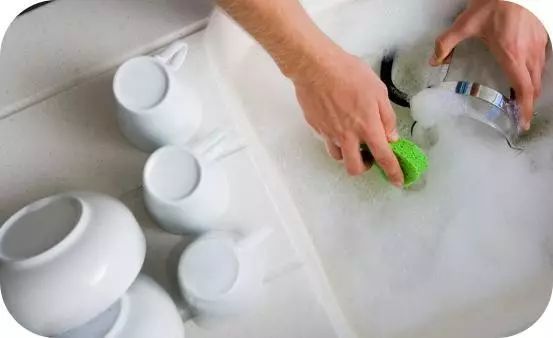
Once the dishes are contaminated with a certain amount of bacteria, even if they are cleaned with a sponge and detergent, a certain amount of bacteria will still remain on the dishes. Therefore, it is best to wash dishes immediately after the water in the dishes has run out and wash pots immediately after cooking. When the bottom of the pot is still slightly hot, add warm water and cooking oil, and the dirt will be easily washed away. For non-stick pans, do not pour cold water directly into the pan as the expansion and contraction due to heat can damage the surface coating.
3. Dilute dishwashing water with warm water for better efficiency
Add a few drops of detergent to half a bowl of water to dilute it, then use the dishcloth to scrub a small amount. Do not directly apply soap to the dishcloth. When washing dishes with dishwashing detergent, it is best to use warm water. The main ingredient in dishwashing detergent contains a large amount of decomposing enzyme, and the temperature at which the enzyme is most effective is around 38 degrees.
Tip: You can also use starch to wash dishes instead of dishwashing detergent. Starch can combine with oil, making it easy to clean with water.
4. Rinse with hot water to avoid residue of dishwashing detergent
Finally, remember to rinse the dishes with hot water to remove residual oil and dishwashing detergent on the surface. Some bacteria can easily adhere to the dishes, and dishwashing detergent can only clean the oil stains, so you still need to thoroughly wash the inside and outside of the dishes, and utensils under running water.
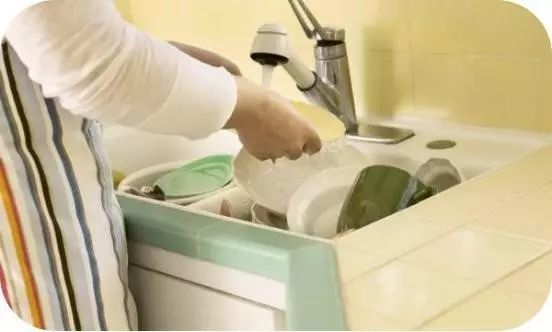
If you wash with cold water, the decomposed oil will stick to the surface of the dishes when it encounters cold water, and it will take more time to clean. On the other hand, dishwashing detergent has a high solubility in hot water, so you can effectively remove excess dishwashing detergent.
5. Allow dishes and utensils to drain and air dry
After washing, place the dishes and utensils upside down to dry quickly. Do not use the dishcloth to dry to prevent the growth of microorganisms. In addition, after washing dishes, remember to wipe the sink and surrounding countertops clean. If not, the sink will become a great place for cross-contamination of microorganisms.
6. Sterilize dishes and utensils to prevent “oral diseases”
After washing dishes, remember to put them in the dishwasher for sterilization. If there is no dishwasher, sun-dry them directly, using ultraviolet rays for sterilization.
According to An Nhiên – Vietnamnet


























